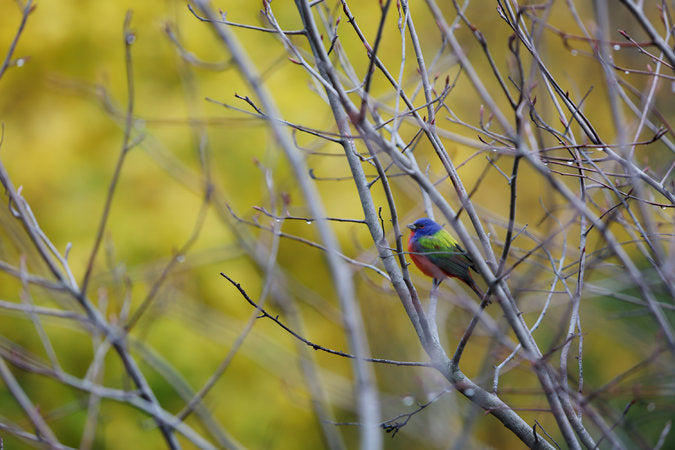Offer
Provide additional details about the offer you're running.
Provide additional details about the offer you're running.
Provide additional details about the offer you're running.

A male painted bunting in Prospect Park on Wednesday. Credit Kirsten Luce for The New York Times
Keeping with the theme of migration and vagrant bird sightings, the New York Times recently reported on a rare sighting in Brooklyn, NY. Earlier this month a Painted Bunting was spotted in Brooklyn’s Prospect Park and has since drawn bird enthusiasts by droves to catch a rare glimpse of this southern bird in the northeastern United States.
The painted bunting is a medium-sized finch that features a stubby and thick bill, perfectly crafted for feasting on seeds. Their colouring is what truly sets them apart and transforms them into a magnet for photography by bird and nature enthusiasts alike. The males sport a vibrant colouring, topped with blue heads, red underparts and green on their backs, while females and immature are more of a yellow-green colouring.
These birds are typically found in the central-southern United States during the summer months, ranging from a large part of Texas, Oklahoma, southern Kansas, Louisiana, Arkansas, and Mississippi. Most of the species will reside in Mexico, the Caribbean, and Central America during the winter, with a portion of the population setting up shop in south Florida as well.
Given the typical geographical restrictions of this species, it is not hard to imagine the excitement and rarity of spotting this bird in of all places, the Big Apple. It is believed that a series of robust south-southwest winds turned this bird around and propelled him in a northern direction, as these birds are in fact noted to be typical vagrants. This year alone, they have been spotted in Rhode Island, Connecticut, New Jersey and even here in Ontario.
The part that has surprised most about this rare sighting is that the subject is a mature male, which is why the bird has garnered so much attention. Often times when this species is spotted so far off course it is the females and juveniles that are seen, rather than the mature male, complete with their rainbow of plumage.
It is still unclear if the bird will end up staying in the area for the winter months, or attempting a more southern relocation as the colder weather sets in. Experts believe because of the abundance of food in the park, he could easily survive the winter months, so long as he is able to avoid predation. This being said, given the unseasonably warm temperatures in eastern North America this year, he will likely snap back into migration mode, once Mother Nature gets back on track and the cold snap hits us.
High Quality Blend